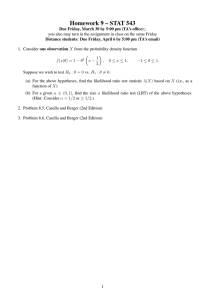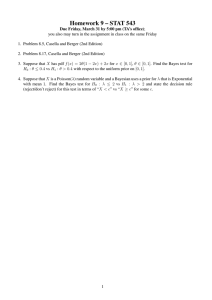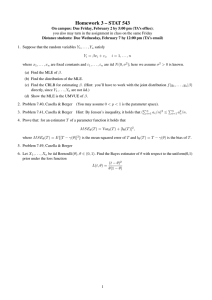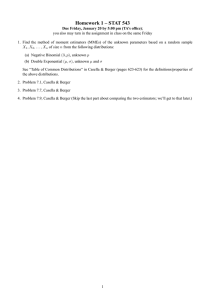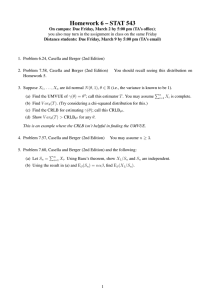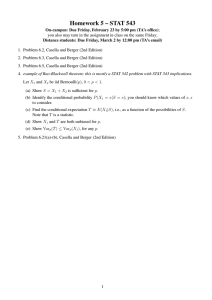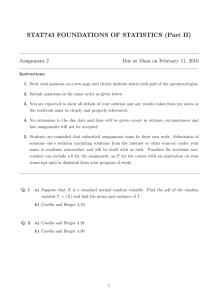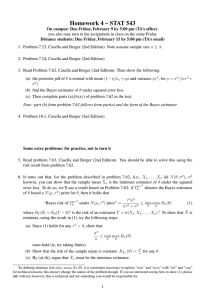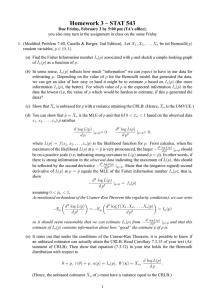Homework 2 – STAT 543
advertisement
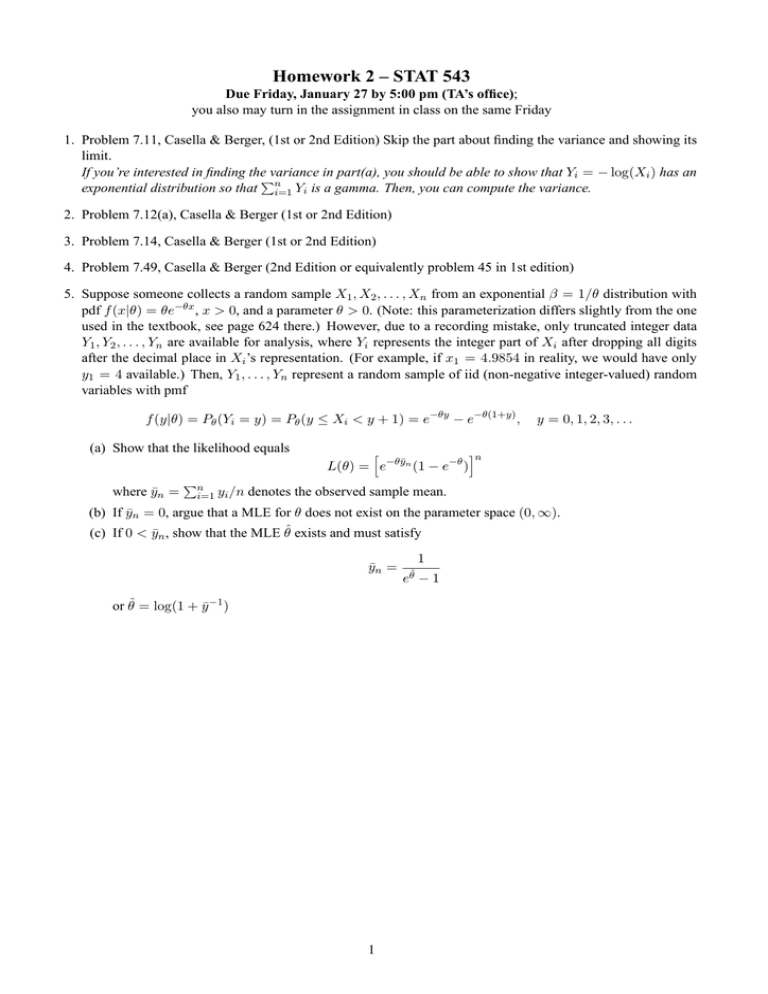
Homework 2 – STAT 543 Due Friday, January 27 by 5:00 pm (TA’s office); you also may turn in the assignment in class on the same Friday 1. Problem 7.11, Casella & Berger, (1st or 2nd Edition) Skip the part about finding the variance and showing its limit. If you’re interested in finding the variance in part(a), you should be able to show that Yi = − log(Xi ) has an P exponential distribution so that ni=1 Yi is a gamma. Then, you can compute the variance. 2. Problem 7.12(a), Casella & Berger (1st or 2nd Edition) 3. Problem 7.14, Casella & Berger (1st or 2nd Edition) 4. Problem 7.49, Casella & Berger (2nd Edition or equivalently problem 45 in 1st edition) 5. Suppose someone collects a random sample X1 , X2 , . . . , Xn from an exponential β = 1/θ distribution with pdf f (x|θ) = θe−θx , x > 0, and a parameter θ > 0. (Note: this parameterization differs slightly from the one used in the textbook, see page 624 there.) However, due to a recording mistake, only truncated integer data Y1 , Y2 , . . . , Yn are available for analysis, where Yi represents the integer part of Xi after dropping all digits after the decimal place in Xi ’s representation. (For example, if x1 = 4.9854 in reality, we would have only y1 = 4 available.) Then, Y1 , . . . , Yn represent a random sample of iid (non-negative integer-valued) random variables with pmf f (y|θ) = Pθ (Yi = y) = Pθ (y ≤ Xi < y + 1) = e−θy − e−θ(1+y) , (a) Show that the likelihood equals h L(θ) = e−θȳn (1 − e−θ ) where ȳn = Pn i=1 yi /n y = 0, 1, 2, 3, . . . in denotes the observed sample mean. (b) If ȳn = 0, argue that a MLE for θ does not exist on the parameter space (0, ∞). (c) If 0 < ȳn , show that the MLE θ̂ exists and must satisfy ȳn = or θ̂ = log(1 + ȳ −1 ) 1 1 eθ̂ −1

